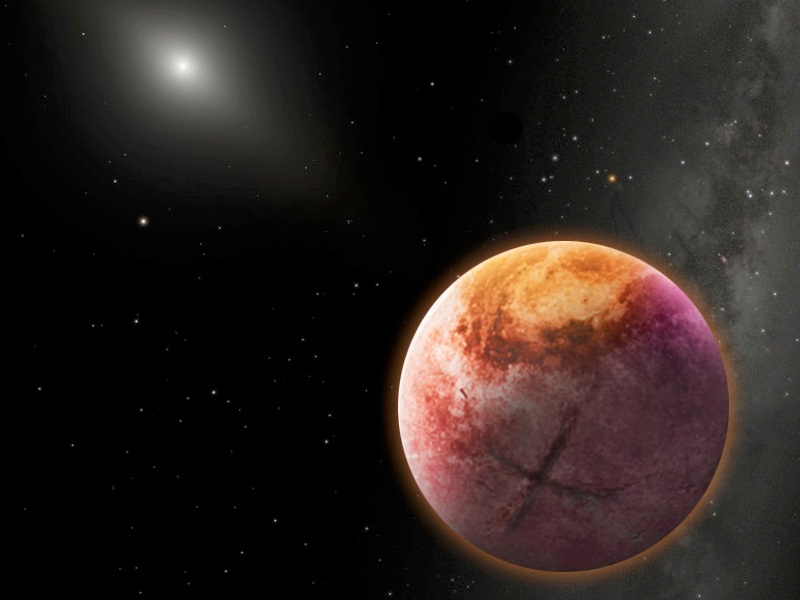While searching for signs of Planet X, scientists have discovered a new dwarf planet candidate beyond Pluto. Astronomers dubbed the object "the Goblin."
The dwarf planet's lengthy orbit is extremely oblong, sending the Goblin far away from Earth for most its 40,000-year-long trek around the sun.
Scientists first spotted the dwarf planet, officially named 2015 TG387, around Halloween in 2015 -- hence the object's nickname. At the time, the Goblin was 80 astronomical units from the sun. An astronomical unit is the distance between Earth and the sun.
Currently, 2015 TG387 is 2.5 times farther away from the sun than Pluto -- and it's moving farther away. The dwarf planet will move as far as 2,300 astronomical units away from the center of the solar system.
The Goblin's perihelion, its closest approach to the sun, is 65 astronomical units. Only two known objects have more distant perihelia, 2012 VP113 and Sedna.
"These so-called Inner Oort Cloud objects like 2015 TG387, 2012 VP113 and Sedna are isolated from most of the solar system's known mass, which makes them immensely interesting," Scott Sheppard, an astronomer at the Carnegie Institution for Science, said in a news release. "They can be used as probes to understand what is happening at the edge of our solar system."
Astronomers first spotted the object using the Japanese Subaru telescope on Hawaii's Mauna Kea. Because the dwarf planet orbits so slowly, astronomers were able to observe the object for a few years before it moved out of sight -- providing enough data to model the object's orbital path.
Scientists detailed their discovery and analysis of the Goblin in a paper submitted to the Astronomical Journal.
Authors of the forthcoming paper think there are likely hundreds of objects like the Goblin yet to be discovered.
"Their distance makes finding them very difficult," said David Tholen, astronomer at the University of Hawaii.
Most of the time, objects like 2015 TG387, 2012 VP113 and Sedna are too faint to observe.
Astronomers discovered the Goblin while looking for evidence of Planet X. Anomalies in the orbits over several distant objects predict the presence of a mysterious planet -- yet to be directly observed by scientists. Some researchers believe Planet X triggers intense comet showers every 27 million years, explaining Earth's periodic mass extinction events.
Scientists are keen to find and study the orbits of more distant objects like the Goblin in an effort to track down Planet X.
"These distant objects are like breadcrumbs leading us to Planet X," Sheppard said. "The more of them we can find, the better we can understand the outer solar system and the possible planet that we think is shaping their orbits -- a discovery that would redefine our knowledge of the solar system's evolution."
By Brooks Hays
Fuente: www.upi.com
